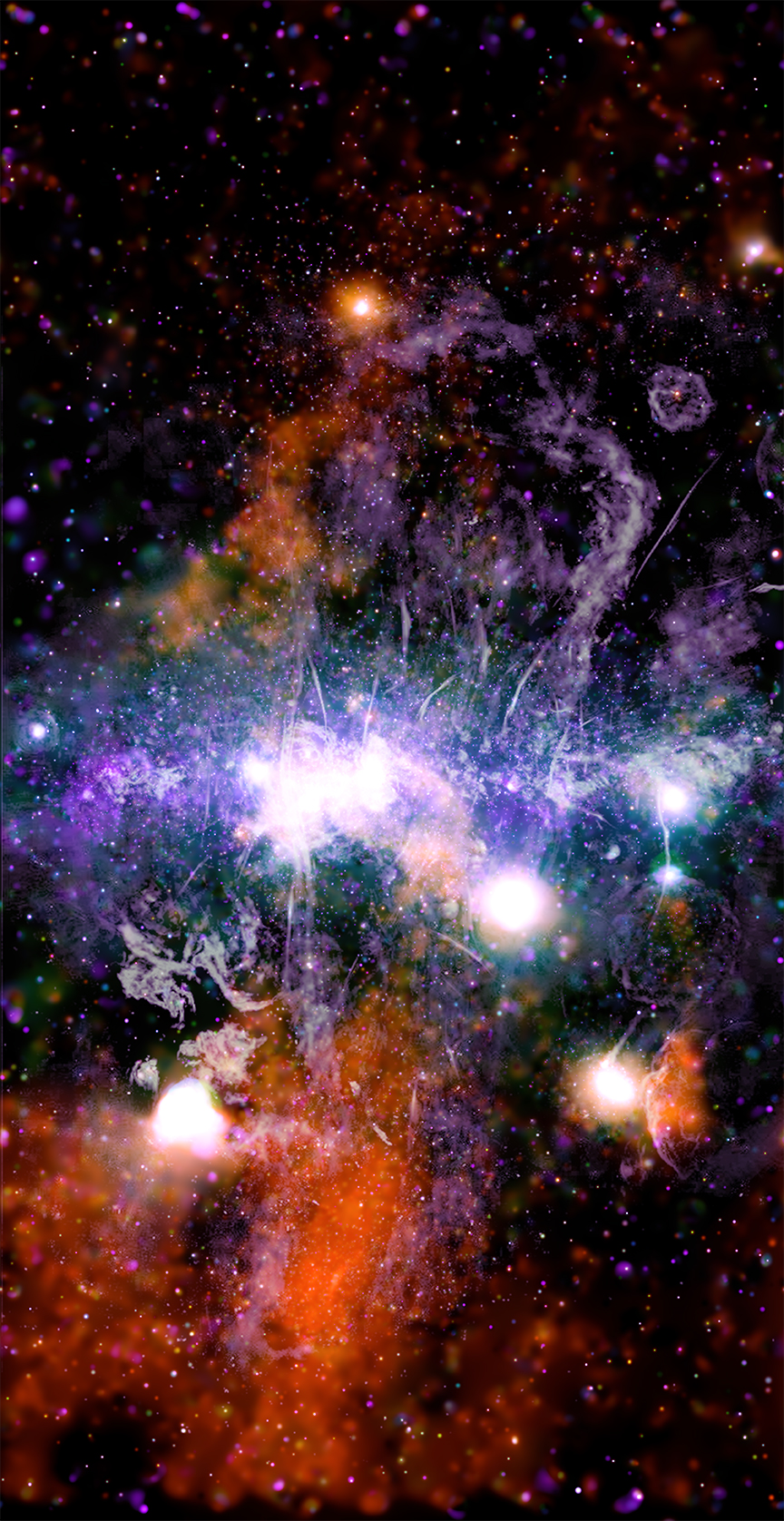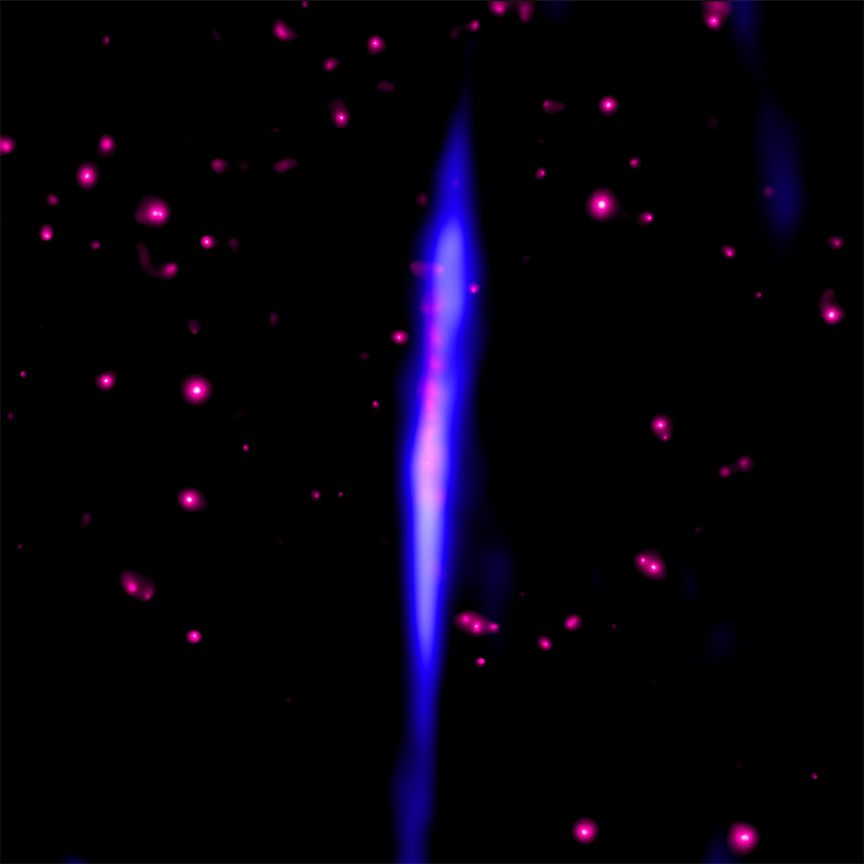Using data from the NASA Chandra X-ray Observatory and South African radio telescope MeerKAT, astronomer Daniel Wang detected magnetic threads and plumes emerging from the center of the Milky Way. Turns out, the center of our galaxy is proving to be a prolific zone for this type of phenomenon.

Magnetic threads
The image depicting the features clearly shows a large number of threads near the galactic center. They are related to nonthermal radio filaments (NTF) — polarized filaments perpendicular to the galaxy and whose origin is still a mystery. The NTFs are the purple lines crossing the galactic center in purple representing the radio emissions.
The images also show bright white objects which — this is cosmic dust detected by X-ray sensors. This isn’t the type of dust you normally see around your house. Specs of cosmic dust are only slightly bigger than a molecule, but that can be enough to act as seeds to form planets and asteroids. The fuzzy glow is a result of the X-ray scattering, which is only possible with a sufficient amount of dust between the source and Chandra.

The most interesting thread is the one called G0.17-0.41. Narrow and vertically oriented with respect to the Milky Way, it emits both radio and X-ray — which may be indicative of a process called magnetic field reconnection. Reconnections happen when magnetic fields connect and then disconnect, which allows a massive energy transfer to happen. This is often a type of space weather phenomenon which occurs after solar flares, magnetic fields form a crossed shape that leads to a separation, then magnetic field lines are separated from the original one.

Large plumes emitted by the galactic center were also observed. The Chandra/MeerKAT plumes have 700 light-years of extension on both sides of the galactic plane, much smaller than the Fermi Bubbles, but farther enough to appear visually disconnected from the galactic center – also a reconnection example.
With this recent discovery, it was also possible to detect several supernovae remnants, as well as neutron stars, and black holes. The most prominent black hole is the Sagittarius A*, our central supermassive black hole. This new view of the galactic could help explain similar features in other galaxies.
The study was published in MNRAS.


